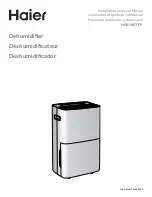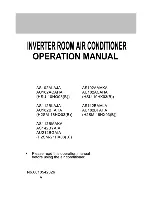
6.4.6.3
Supplementary criteria
To relieve the burden of constructing an exact optimal operate-restrain characteristic,
two special features supplement the basic stabilized differential protection function,
making Generator differential protection GENPDIF a very reliable one.
The supplementary criteria are:
•
Internal/external fault discriminator (enhances, or blocks, the trip command)
•
Harmonic restrain (blocks only)
The internal/external fault discriminator is a very reliable supplementary criterion. It
discriminates with a high speed between internal and external faults. The
discriminator is the main part of what is here called the negative-sequence-current-
based differential protections. It is recommended that this feature is always used (that
is, enabled,
OpNegSeqDiff
=
On
).
If a fault is classified as internal, then any eventual block signals by the harmonic
criterion are ignored, and the differential protection can operate very quickly without
any further delay.
If a fault (disturbance) is classified as external, then generally, but not
unconditionally, a trip command is prevented. If a fault is classified as external,
harmonic analysis of the fault conditions is initiated.
If all the differential currents which caused their respective start signals to be set, are
free of harmonic pollution, that is, if no harmonic block signal has been set, then a
(minor) internal fault, simultaneous with a predominant external fault, can be
suspected. This conclusion can be drawn because at external faults, major false
differential currents can only exist when one or more current transformers saturate
transiently. In this case, the false instantaneous differential currents are highly
polluted by higher harmonic components, the 2
nd
, and the 5
th
.
The existence of relatively high negative-sequence currents is in itself an indication of
a disturbance, as the negative-sequence currents are superimposed, pure-fault
quantities. The negative-sequence currents are measurable indications of abnormal
conditions. The negative sequence currents are particularly suitable for directional
tests. The negative sequence internal or external fault discriminator works
satisfactorily even in case of three-phase faults. Because of the fundamental frequency
components (50/60 Hz) of the decaying DC offset of the fault currents, the system is
not fully symmetrical immediately after the fault. Due to the transient existence of the
negative sequence system, faults can be distinguished as internal or external, even for
three-phase faults.
The internal or external fault discriminator responds to the relative phase angles of the
negative sequence fault currents at both ends of the stator winding. Observe that the
source of the negative sequence currents at unsymmetrical faults is at the fault point.
•
If the two negative sequence currents, as seen by the differential relay, flow in the
same direction (that is with the CTs oriented as in figure
), the fault is internal.
1MRK 502 048-UEN A
Section 6
Differential protection
131
Technical manual
Содержание REG650 ANSI
Страница 1: ...Relion 650 series Generator protection REG650 Technical manual ...
Страница 2: ......
Страница 36: ...30 ...
Страница 42: ...36 ...
Страница 50: ...44 ...
Страница 64: ...58 ...
Страница 86: ...80 ...
Страница 262: ...256 ...
Страница 300: ...294 ...
Страница 438: ...432 ...
Страница 476: ...470 ...
Страница 592: ...586 ...
Страница 664: ...658 ...
Страница 678: ...672 ...
Страница 726: ...720 ...
Страница 727: ...721 ...
















































